Screech Owls And Blind Snakes Have Bizarre But Beneficial Relationship
I sometimes find myself having to remind our museum guests that life is not like a Disney movie. Thanks to film and pop culture, many people seem to believe that animals all get along with one another and live long, happy lives together in the wild. In reality, while sometimes cute and adorable, life in the wilderness can be tragically and brutally cut short; every day, plants and animals have to fight for their survival, a fight our species has largely forgotten. However, out of the harsh competition and eternal struggle, unlikely partnerships do emerge, and some of these team-ups are so bizarre that they seem like something out of a children's film.
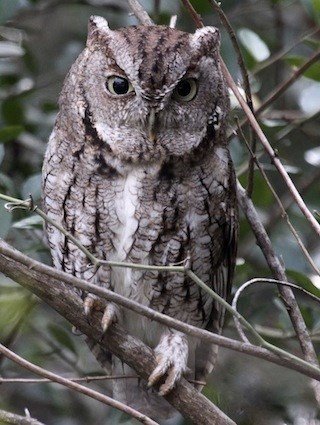
There are a lot of interesting animal relationships out there that have benefits for both parties involed; ants and aphids, fish and cleaner shrimp, zebras and oxpeckers, these animals seemingly work together to make life more bearable. In biology, these are known as symbiotic relationships, where the species involved have formed a sort of partnership that benefits one or both species and increases their chances for survival. Sometimes the interactions may be brief, while others work together for generations, and have become wholly reliant on one another.
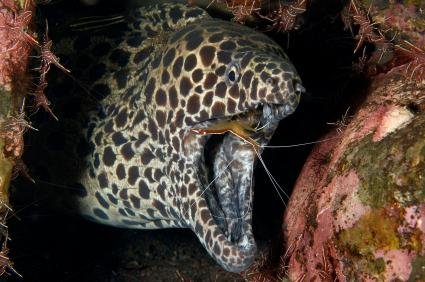
This eel is not eating the shrimp; like going to the dentist, the eel allows the shrimp to clean and pick parasites out of its mouth. The eel stays clean and healthy, and the shrimp gets a meal.
Despite their small size (6-10 inches) and adorably fluffy appearance, eastern screech owls are formidable hunters. Found all across eastern North America, the screech owl is a nocturnal bird of prey armed with keen senses and silent flight (unlike most birds with stiff feathers, owls have soft downy feathers that reduce noise when flying. In our aviary, it's almost impossible to hear one fly right past your head). They primarily hunt rodents, but will not pass up on smaller birds, amphibians, reptiles and insects if the opportunity arises. Under the cover of darkness, these seemingly frail birds take down their prey before it even senses it is in danger.
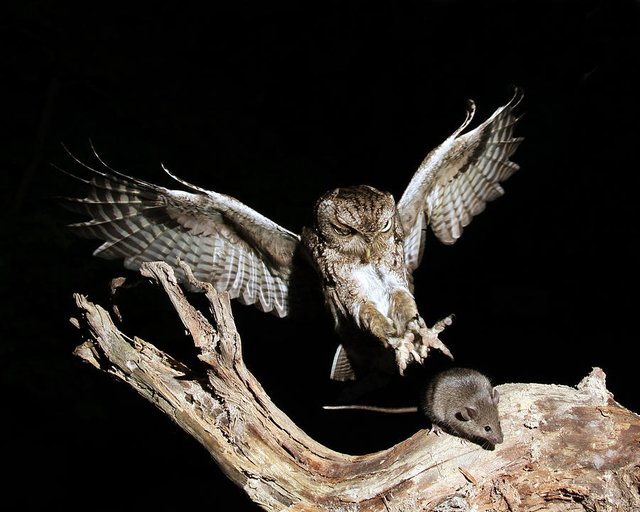
During nesting season, like any other bird, screech owls go hunting for prey to bring back to feed their owlets. They generally make sure the prey is sufficiently dead (usually beheaded, just to be safe) before returning to the nest with dinner. However, in the 1980's, researchers studying the owls' behavior noted that one species of animals always seemed spared by the screech owls; Texas blind snakes were captured and brought back to the nest alive.
"Reptilian prey often dangles from the bill of adult screech owls upon delivery to a nest, but … live blind snakes were coiled about the bills of the owls that carried them." Source
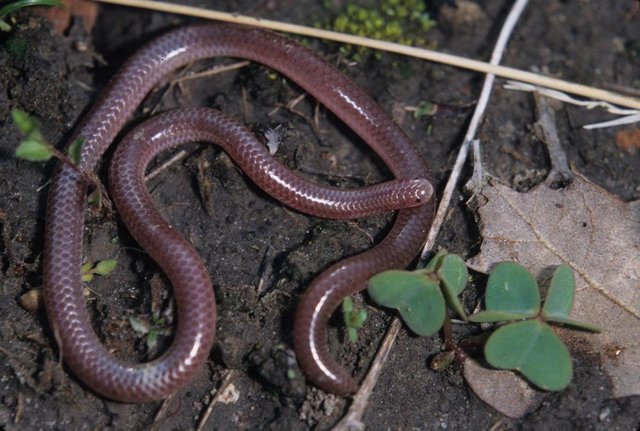
The researchers turned their attention to the nests to figure out what became of the snake captives. A small number were promptly eaten by chicks as they were dropped into the nest; being about the size of a large earthworm, the snake would be a good meal for an owlet. However, most had burrowed into and under the nest and seemed to be surviving quite comfortably. They fed on ants, termites, larvae and other pests, some of which were likely brought back to the nest by the returning parents. The researchers wondered what sort of effect, if any, this had on growing chicks. The insect pests could conceivably be parasites towards the owlets or contaminate their food, so could the presence of the snakes have a beneficial effect?
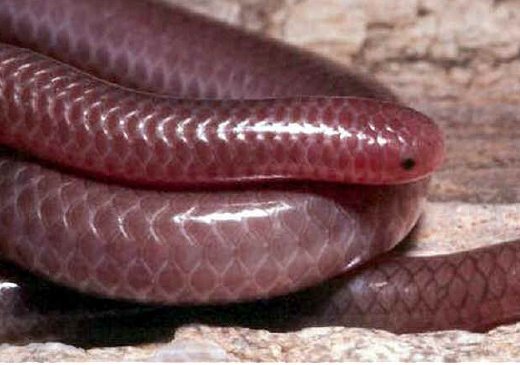
They observed the nests for weeks, weighing and assessing the health of the nestlings. The owls that grew up along side the snakes tended to grow faster and were more likely to survive than those that didn't. It became clear that the snakes weren't being brought back by accident, this was a strategic move on the part of the parents to increase the chances of survival for their offspring.

There is some debate whether or not this is a truly mutualistic relationship (meaning that both species benefit from the relationship). The owls get a live-in house keeper that keeps that nest clean and benefits the young, while the snake is given a shelter with a good food supply. However, others argue that, because the snakes are sometimes eaten (and don't often survive well once the owlets leave the nest), this is actually a commensal relationship. One species benfits, while the snake has to do its best to deal with the situation.
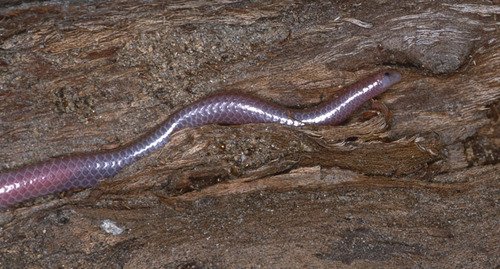
Life in the wild can be ugly and brutal, but some species have come together to make a go of things as a sort of "team". It may mean more competition in the long run, but the benefits of their relationship may allow them to live for another day. It just goes to show that the web of life is far more complex that most people realize, and losing species may have more of an impact on the natural world than we recognize. We have to protect animals and their unique relationships to protect our natural resources.
Image Links: 1, 2, 3, 4, 5, 6, 7
Article Link: https://www.earthtouchnews.com/

Humans are a creature of the earth that must live with animals.
Interesting read, as usual. The base of predatory birds nests are absolutely crawling with insects, that mainly feed on the leftovers of the animals that such birds bring into the nest to feed the young. I have seen this in a bald eagle nest in particular, but I assume its not much different with other species.
Especially in the dark these insects (similar looking to earwigs, but they are not earwigs) come out and crawl around, disturbing the eaglets in their sleep.
On another occassion, I have seen that a sparrow (or a similar finch like bird) had build its nest inside the pile of branches which a osprey build its nest from. The sparrow was continously flying in and out at the edge of the nest, while the osprey, barely 2 feet away, totally ignored him. The osprey could have easily grabbed the sparrow and feed it to its own young, but it didn't.
I was wondering if thats a form of symbiosis then. The sparrow gets additional insects from the osprey nest, plus some protection because the osprey wont tolerate any nest robbers (rats, snakes or whatever) come close to the nest. And the osprey gets rid of some insect infestation of the nest.
I would totally count that as some form of symbiosis, probably even mutualism to an extent. The sparrow benefits from food and shelter and the osprey certainly isn't harmed in the process. The osprey may not attack the bird more because they rarely stray from their fish diet unless absolutely necessary, so it may just be ignoring the sparrow because it's not part of its "regular" diet. But since the osprey benefits from the sparrow picking out parasites and pests, I think it's safe to call that a mutualistic relationship.
Well, its difficult to say why the osprey ignored the sparrow. Normally they are not fond of anyone coming close to the nest. And there is nothing wrong with a free meal either, even if they are usually fish eaters.
Again the comparison with the bald eagles gives good example: about 95% of their prey was fish too, but a few times they also brought a opossum, once or twice a bird (I assume a egret, but its hard to say since they were pretty messed up) and once a rabbit.
And there were also occassionally smaller birds landing in the nest tree, but they kept a safe distance to the eagles, and the eagles always kept an eye on them.
I find it fascinating that we now can learn more about the interactions between different species, thanks to the camera technology we have now. This way we can learn details of the behaviour, that was not known before since a human observer always disturbed the behaviour of the animals.
Things like what insects live underneath the eagle nest and what they do during the night.
And the best thing is, that everybody can participate in the observations, via the internet.
Great post @herpetologyguy
I found 2 main features of owls. Here are the features I found:
When I saw the owl flying at night arises curiosity because the owl can fly without making a sound. I wonder why owls can fly without sound? While there are planes or helicopters that need sky above the house, it makes a very noisy sound. When I read the National Geographic website, the site says there are other types that fly that silent. What are the hidden secrets? The wind that hit the pigeons caused a very risky turbulence. Not so with owls. Here's the answer! The feather on the back side has a tassel that is able to break or break the sound waves that arise when the wind flows over the wing as it flaps its wings downward. The cotton feathers on the other reinforced the muffled sound.
Features of owl eyes.
Owls can see its prey at night which is pitch black and owls will not hit the object in front of it when flying.
When the owl sees its prey he is silent and simplifies his movements. So prey does not know anymore predator named Bird Owl.
From the perks the owl can be a philosophy of life motivation.
Philosophy contained among others:
The feathers on owl wings have a special design, which prevents the hissing sound the air stream makes on a rigid edge of a wing. Owl feathers are soft and fuzzy at the tips, creating something like a soft edge on the wings.
Dear friend! Your post was chosen for the squirrel CryptoNut Zappl review. CryptoNut is a small squirrel that lives in our shelter.Twice a week squirrel CryptoNut visits the pages of those who write about animals or have pets. Links to the most interesting posts are included in the review. You can see the review here https://steemit.com/animals/@animal-shelter/squirrel-cryptonut-zappl-watches-you-tuesday-august-8 Thank you for your work and popularizing the life of animals and pets!

Thank you!
I find that the struggle is what gives any form of life it's meaning. Symbiotic behaviour in nature always makes me jolly, organisms struggling together. How nice!
Fascinating! I didn't know that snakes and owls could mutually benefit each other. Funny how life is.
Really interesting stuff you wrote! Waiting for more to come.
Interesting and informative :)
Wow, cool!